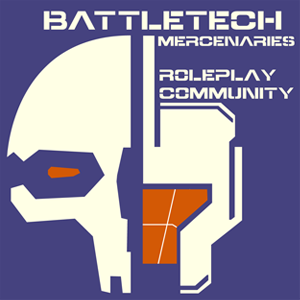Freeminders
Sarna News

- HEXTECH Review - Wave 3 Brings More Urban Options To Your Battlefield
- Your BattleTech News Round-Up For March, 2024
- Crashing 'Mechs With Jennifer Brozek, Author Of The Rogue Academy Trilogy
- Getting The Word Out With Rem Alternis, Catalyst Community & Marketing Director
- Bad 'Mechs - Yeoman
- Read more →
Freeminders | |
|---|---|
| Organization Profile | |
| Type | Social Reformers |
| Founded | 3136[1] |
| Parent Organization | Rasalhague Dominion[1] |
| Headquarters | Vega[1] |
The Freeminders were a group of political and social reformists from Clan Ghost Bear.
History[edit]
Origins[edit]
The Freeminders were a group of dissidents inside the Rasalhague Dominion, born on Vega after the planet was occupied by the Dominion's forces. Its members demanded greater freedoms, the right to marry people of the Inner Sphere at will, and a return to the family principles that Clan Ghost Bear was founded on. The new philosophy was led by a mysterious leader, the Underkhan or Ukhan. The Freeminders followed the teachings of an ancient book called The Final Codex, which was supposedly written by Nicholas Kerensky, the founder of the Clans. The book taught that the Clans' eugenics programs and use of Trueborns was provisional, and that such systems must be abandoned in favor of a more natural and free society after the return of the Clans to the Inner Sphere.[2]
The Freeminders eventually expanded to other nearby worlds, initially only in the civilian castes, but later to the troops of the Dominion's Omega Galaxy stationed on Vega. Eventually, Galaxy Commander Isis Bekker-Florala became the visible head of the movement, marrying a civilian from Vega. However, unlike the Motstånd resistance organization, they were pacifists, which prevented an official response from quickly destroying the movement.[3]
Expansion[edit]
The Freeminders' beliefs eventually extended throughout the Dominion. The nation's opinions about the movement was divided: some warriors saw them as dezgra, while others tolerated them. Despite being forcibly rebuffed by the Dominion government, they grew in influence over time, although the establishment of a satellite state in the former Prefecture I, later known as the Vega Protectorate, caused some concern among the Dominion as a whole. Isis Bekker’s defiance of her orders distressed many of her peers in the Dominion, though civilian members of the Council urged a light touch in dealing with the Freeminder separatists.[3]
Since late 3136, this more enlightened approach had borne beneficial dividends for the Dominion: soon after the Vega Protectorate’s formation, the Dominion began shipping off any and all Freeminders they could get their hands on to the region. A massive influx of lower caste members produced a boom in Vega’s economy, and the little statelet was soon (reluctantly) welcomed as a first-class trading partner for their parent nation. The cautious approach the Dominion took toward its wayward kin appeared to have worked; the absorption of the Protectorate back into the Dominion—though with an unusual measure of semi-autonomy guaranteed by the Council—not only reflected their hands-off policy towards Vega, but also pointed to a possible shift in attitudes towards closer Clan-Spheroid integration in the future.[3]
Dominion Civil War[edit]
The dawn of the IlClan Era brought great hope to the Freeminders, who expected to spread the ideals of the Final Codex to all Clans—but that hope soon died.[4] The Dominion Civil War, which occurred when fighting began between anti-Star League Deniers and pro-Star League Joiners, eventually spread to the Protectorate. Despite the Protectorate being one of the most peaceful regions of the Dominion, some warriors decided to eradicate the Freeminders while the Civil War provided the opportunity. Star Colonel Albert Hall took command of Alpha Galaxy in the absence of its leader Lars Magnusson and led it to Vega, expecting to destroy the Freeminders permanently. However, Isis Bekker-Florala refused to engage the rogue unit and thus actual armed conflict was limited. Eventually, Galaxy Commander Lars Magnusson returned, killed Hall, and made peace with Bekker-Florala, giving her the task of maintaining peace in the Vega Protectorate.[5]

